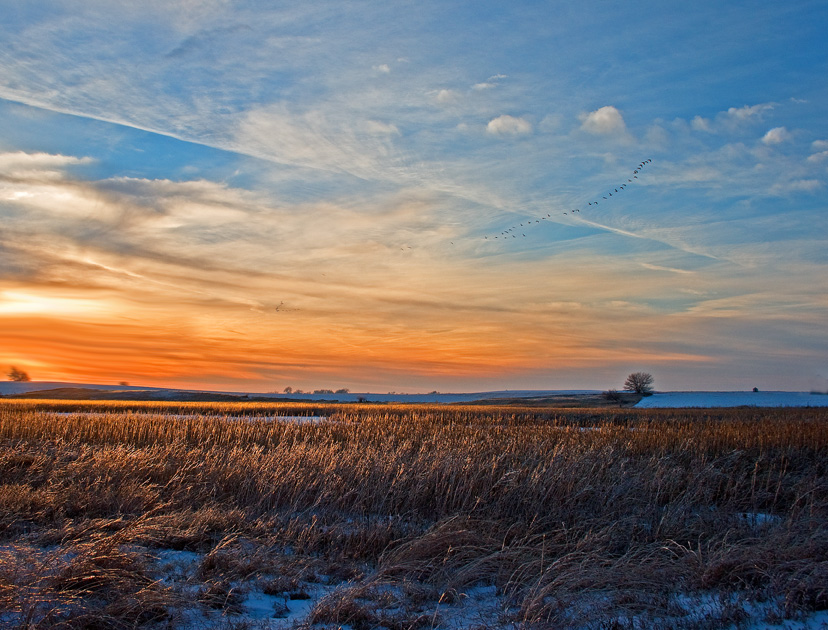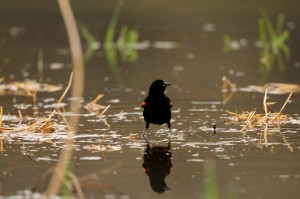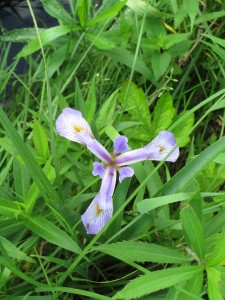Nature's natural nitrate filters
By Taylor on March 26, 2015 in Blog

The sun sets over the icy Spring Run Wetland Complex in Dickinson County, just off East Okoboji Lake. (Photo by Daniel Ruf)
Wetlands can be beautiful, like in the photo above, if you catch them at the right time. They can also be a buggy swamp in the middle of a hot summer day. But beyond their aesthetic appeal (or lack thereof), wetlands serve an important purpose. Not only do they play host to various plant and wildlife species, these natural sponges remove nitrates from our water, contributing to Iowa’s environmental and economic vitality.

Wetlands provide habitat for various wildlife, such as this red-winged blackbird, seen here at the DeCook Wetlands.
Funding the Natural Resources and Outdoor Recreation Trust Fund would provide money to voluntary programs that help construct and restore natural wetlands, such as the Conservation Reserve and Enhancement Program (CREP).
A partnership between the Iowa Department of Agriculture and Land Stewardship (IDALS) and the USDA Farm Service Agency, CREP installs wetlands in strategic locations within the Des Moines Lobe area. These wetlands were once plentiful in Iowa before fields were tiled and drained for agriculture. CREP just restores them and makes them economically advantageous.
Factoring in construction and maintenance, IDALS estimates that every pound of nitrates removed from the water in CREP wetlands costs about 26 cents. In comparison, every pound of nitrates removed by the Des Moines Water Works’ facility from 2013-2014 cost about $17.75.

Many plant species thrive in wetland areas, like the Blue Flag Iris.
Wetlands remove 40 percent to 90 percent of the nitrates from water that flows through them, according to IDALS. The wetland’s vegetation uses the nitrogen, converts it into gas and then releases it back into the air. Using the 96 wetlands restored and under development in the Des Moines Lobe, IDALS is estimating that this process will remove over 1.3 million pounds of nitrates annually from our water.
Yet, landowners wanting to enroll in the program have to wait an average of seven years for their land to be evaluated. Funding the Natural Resources and Outdoor Recreation Trust Fund would provide more money for landowners that want to enroll in CREP and similar conservation programs, shortening the waiting list.
“They’re shovel-ready projects,” said Patrick Snell, INHF Mark C. Ackelson Fellow. “These programs just need the funding.”
So what can Iowans do to Fund the Trust?
